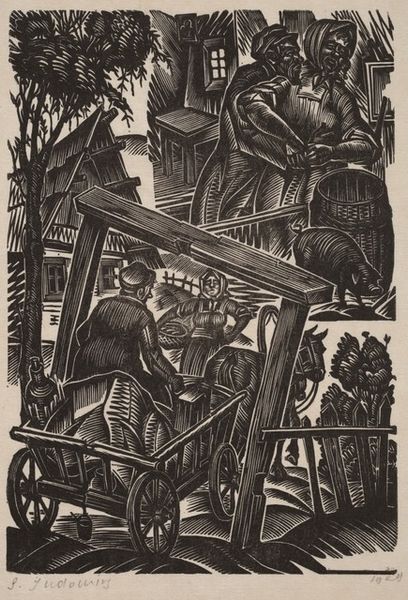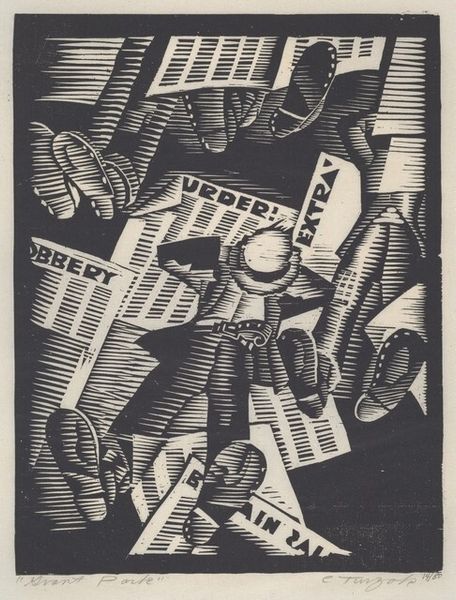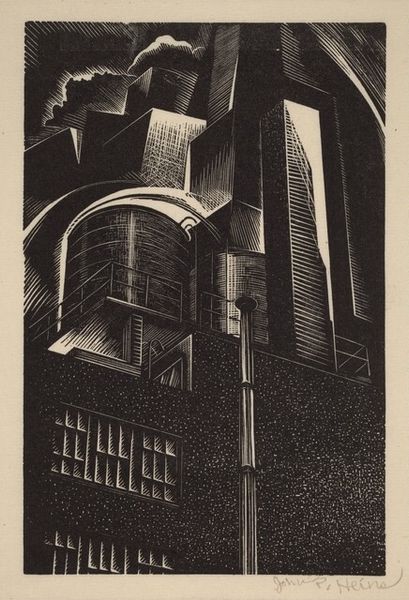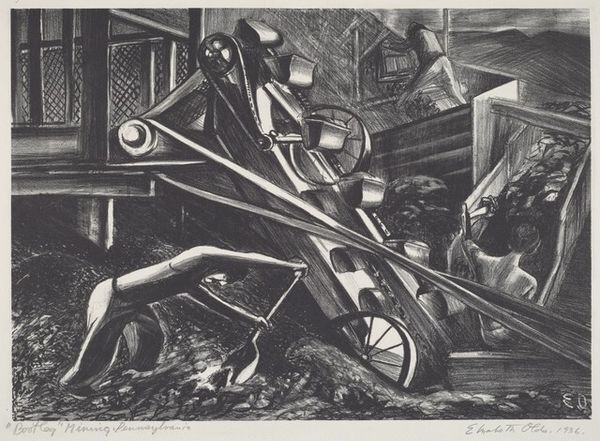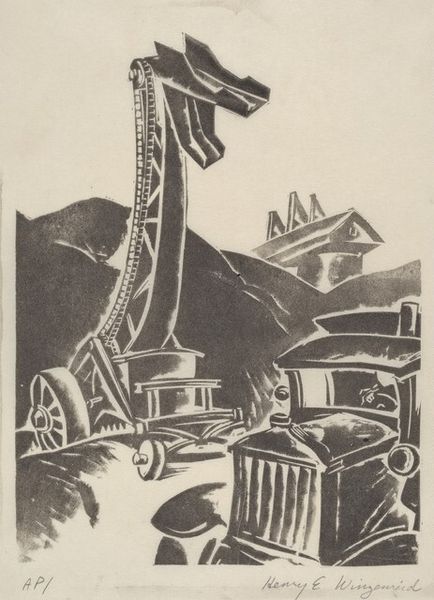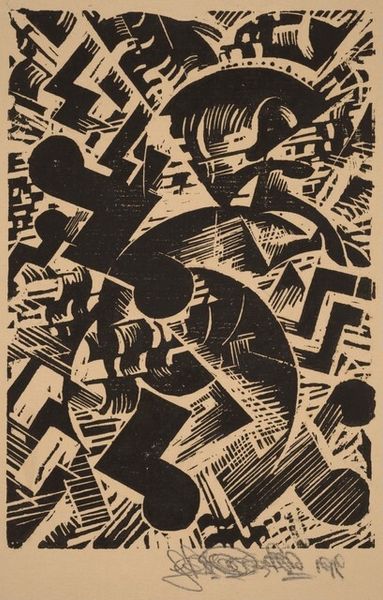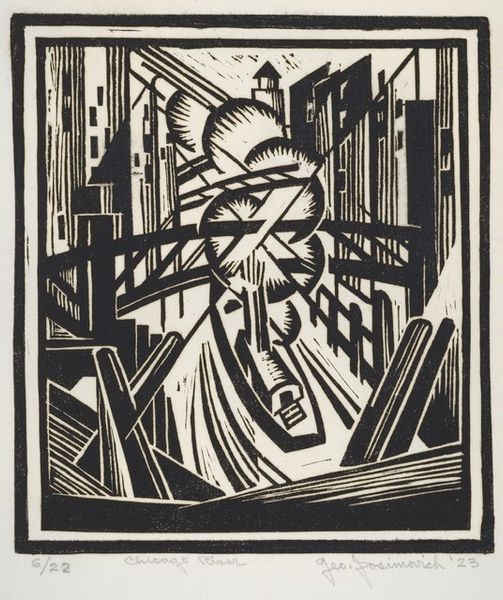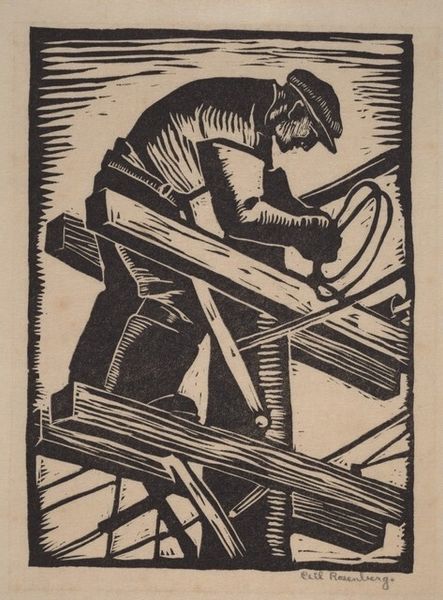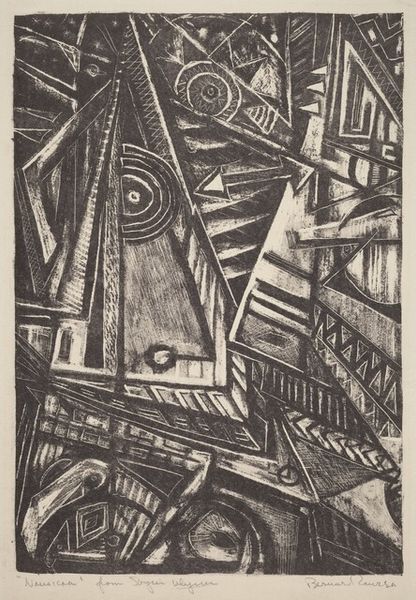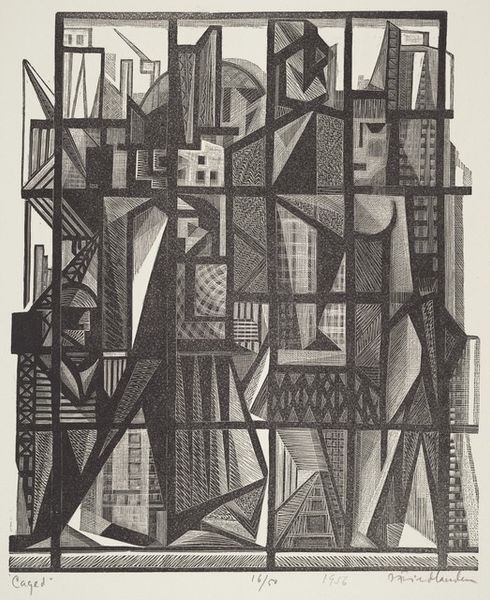
print, woodcut
#
narrative-art
# print
#
caricature
#
social-realism
#
geometric
#
woodcut
Dimensions: block: 164 x 111 mm sheet: 216 x 141 mm
Copyright: National Gallery of Art: CC0 1.0
Curator: Let's turn our attention to "The Workers (No. I)", a woodcut print created by Charles Turzak around the 1930s. What are your immediate impressions? Editor: Stark. The high-contrast black and white immediately evokes a sense of drama. The sharp geometric lines of the industrial background almost threaten to overwhelm the figures in the foreground. Curator: Indeed. The print reflects the era’s focus on the working class and labor movements, aligning with the principles of social realism. It presents a powerful commentary on worker’s rights during a period marked by significant economic disparity. We must ask ourselves: who are these workers and what socioeconomic conditions produced them? Editor: Semiotically, it’s fascinating. The composition draws the eye upward from the workers clustered around their educational material to the colossal factory structures, suggesting their relationship with industry, but there is also a star, almost as a guiding beacon. How are we meant to understand the semiotic relation between labour and aspiration? Curator: Precisely. The "Workers Education" material these men are reading directly references attempts by leftist organizations to empower the proletariat through intellectual and social enlightenment. Turzak makes us confront the dynamics of class struggle and knowledge. It’s essential we analyze how it perpetuates or critiques prevailing notions about power and collective action. Editor: While understanding this context undoubtedly enriches the piece, one could also view it more abstractly through the bold lines and form itself. It feels… weighty. A meditation on the burden and importance of industry itself, which has become so visually striking in itself due to the woodcut medium used to execute it. The geometric forms of the buildings give an impression of towering architecture, imposing the importance of manufacturing and architectural prowess above the daily life. Curator: I appreciate how the formal elements contribute to its narrative weight. It encapsulates the urgency and resilience of the era while inviting us to confront unresolved inequities in contemporary society. The scale feels grand despite its small form. It is a window into a past that persists in many ways. Editor: It is as though Turzak has captured, within the graphic strength of his woodcut, a fundamental truth, the tensions that we can feel visually regardless of the immediate themes, from a distant vantage point and current one.
Comments
No comments
Be the first to comment and join the conversation on the ultimate creative platform.

